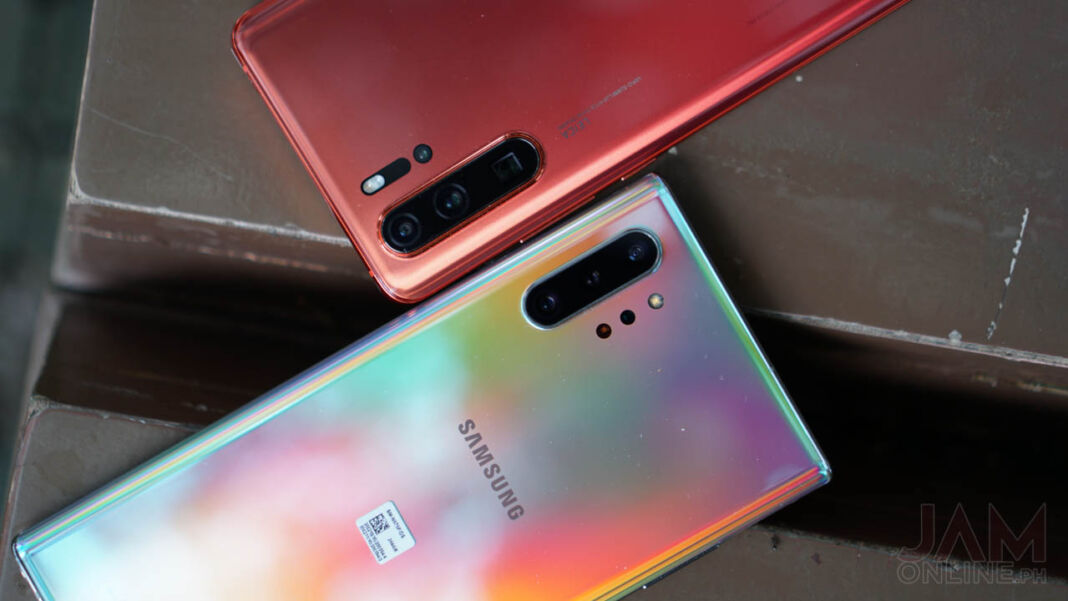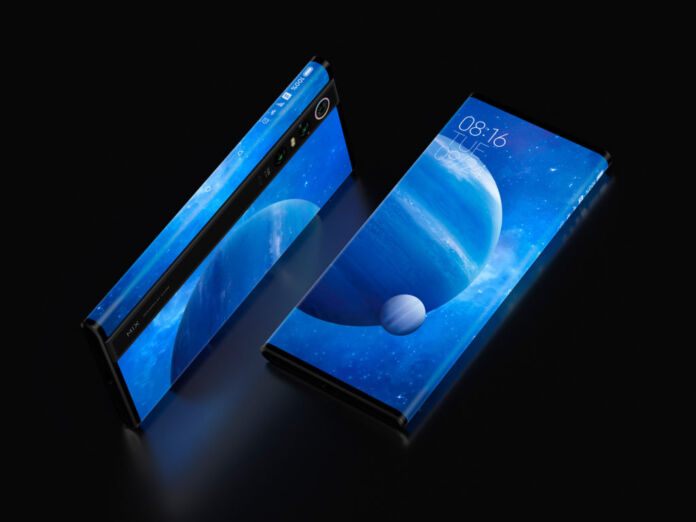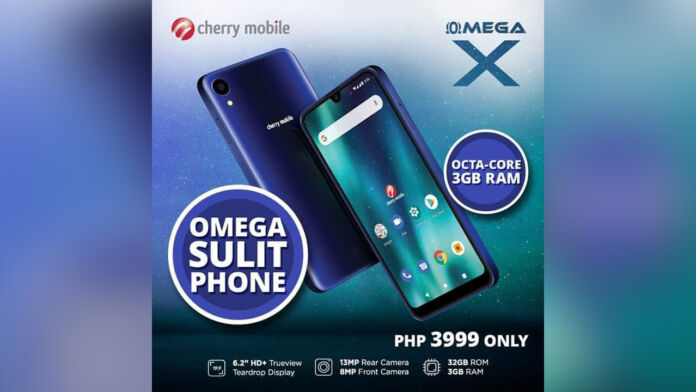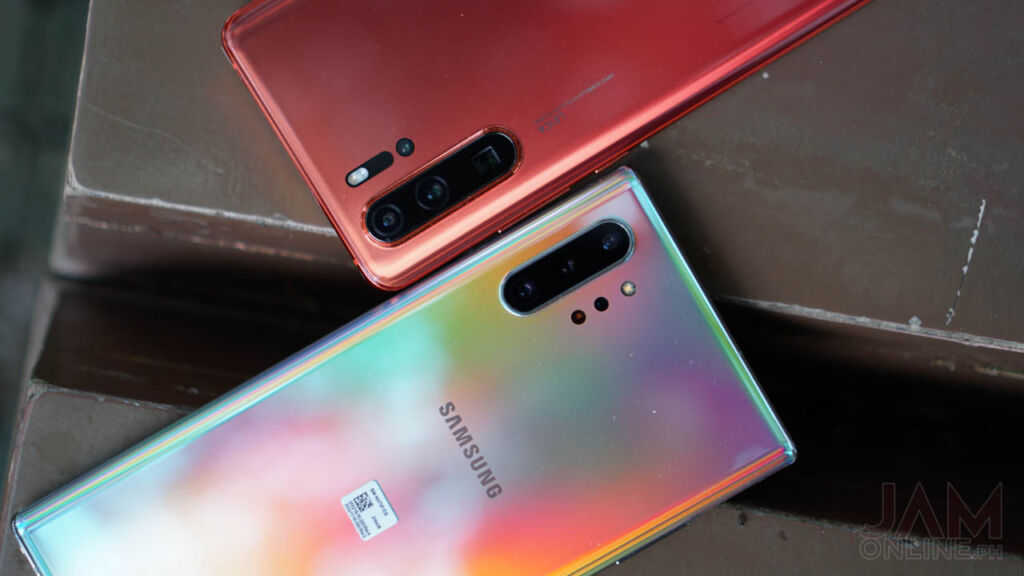
The Huawei P30 Pro has been out in the market for a while now and it’s still one of the best camera smartphones out there and it’s still miles away from other camera smartphones out there and currently, the Huawei P30 Pro is one of the highest rated smartphone at DxOMark but how does it fare to the latest flagship smartphone of Samsung? Well, let’s do a comparison here.
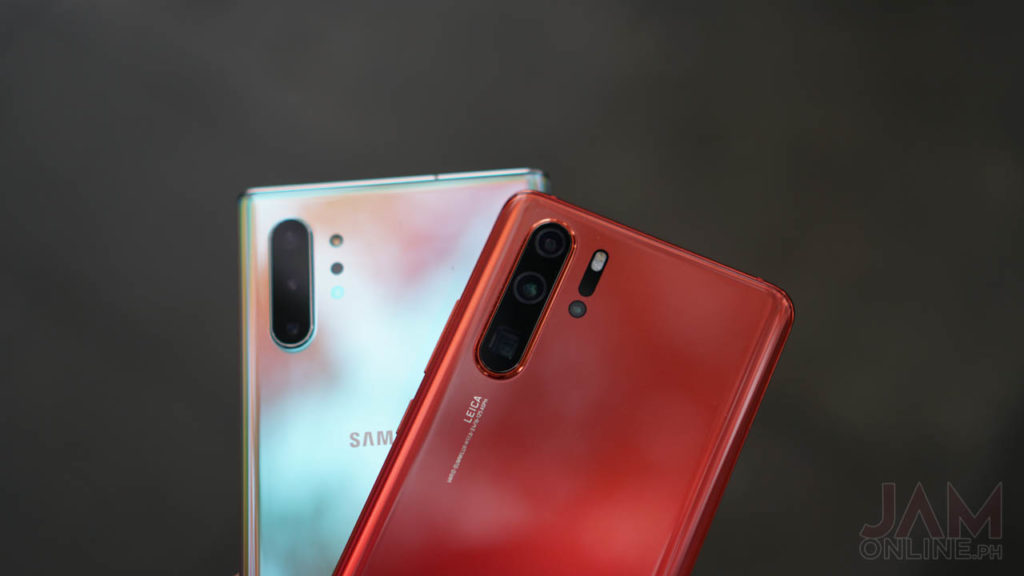
To give you a short intro, the Samsung Galaxy Note10+ packs a quadruple lens camera with 16MP ultra wide camera, 12MP wide-angle camera, 12MP telephoto camera, and a VGA DepthVision camera. The smartphone is also capable of 10x digital zoom and it comes with Dual Aperture at f1.5 and f2.4. The Samsung Galaxy Note10+ also comes with a 10-megapixel front camera
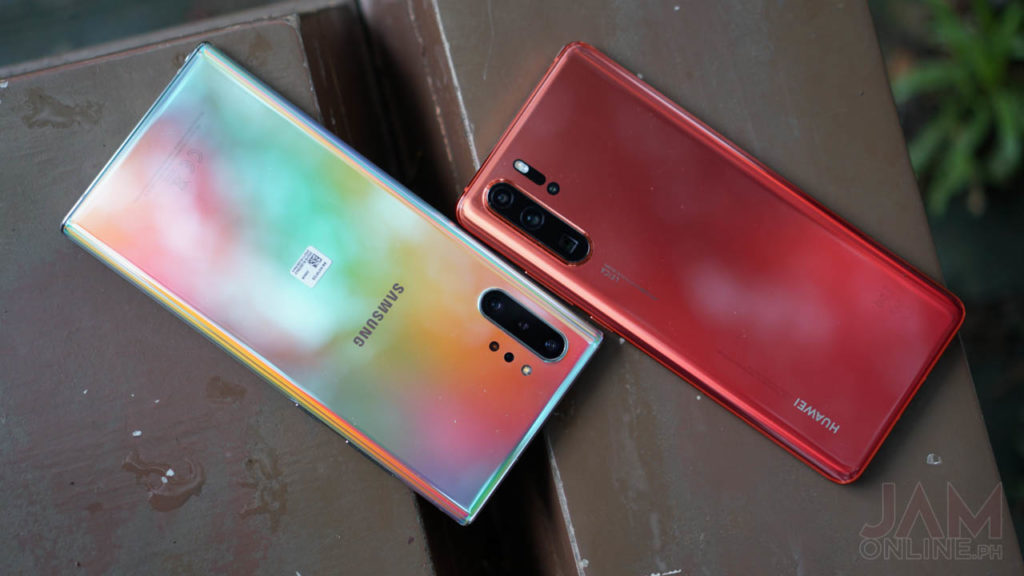
While the Huawei P30 Pro comes with a Leica Quad Camera with 40MP wide angle lens + 20MP ultra wide angle lens + 8MP telephoto lens and a Huawei TOF Camera for better depth sensing. We all know that the Leica brand is known for creating amazing cameras and they’re bringing that to the Huawei P30 Pro. The telephoto lens of the smartphone is also capable of zooming up 50x which is light years ahead against most smartphones in the industry and the AIS (Huawei AI Image Stabilization) works really well compared to other smartphones and this feature really helps in producing the best night shots on a camera smartphone in the industry. When it comes to selfies, the Huawei P30 Pro comes with a 32MP selfie sensor.
Leica and Huawei partnership have gone a long way. It all started back in 2016 when Huawei introduced the Huawei P9 and it was game changing as it has a dual lens camera with a monochrome sensor that offers better colors and depth. In 2018, they’ve introduced the Huawei P20 Pro that offers a triple lens camera that pushed the boundaries especially with its night mode And now, the Huawei P30 Pro aims to change the game again with its quadruple Leica camera thanks to its ToF lens and the periscope lens of the smartphone.
Now, let’s get down to business and let’s compare the cameras of these two smartphones.
Macro
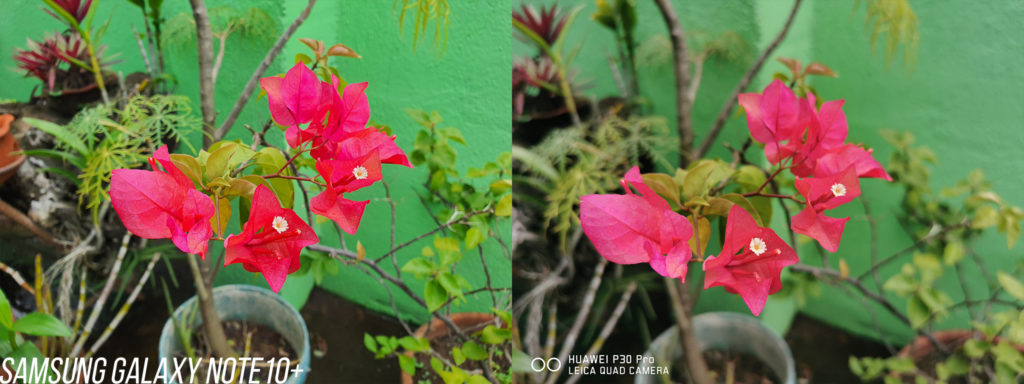
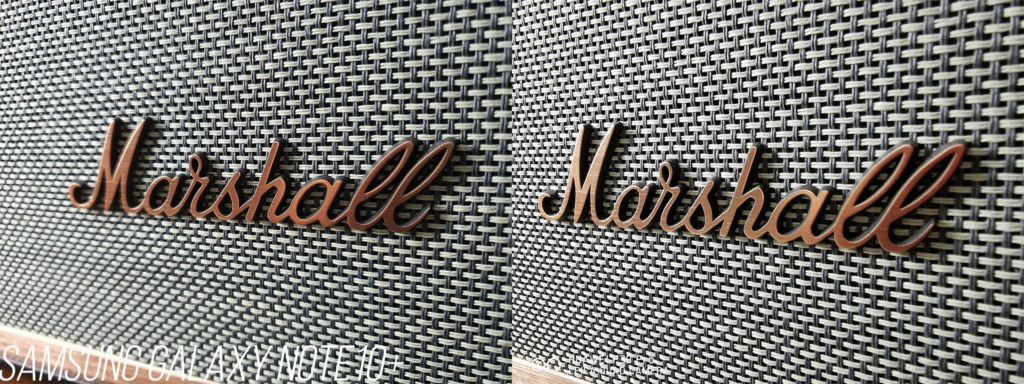
In our macro shots, the Huawei P30 Pro surprised us with its AI prowess. The ultra wide-angle lens of the Huawei P30 Pro is capable of shooting a macro and it can focus as close as 25mm which is pretty amazing for a smartphone. Thanks to AI and the ultra wide-angle lens of the Huawei P30 Pro, we can get less bokeh on the macro shots and offers more details on the objects that we’re shooting
Winner: Huawei P30 Pro
Portrait/Live Focus

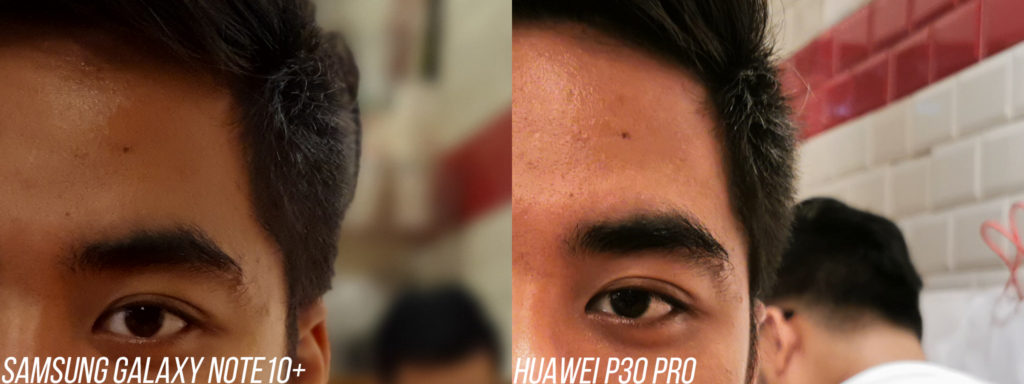
In my review of the Huawei P30 Pro, I’ve noticed that the bokeh on the portrait mode of the Huawei P30 Pro is a lot better than most smartphones. Why? Because the smartphone was able to detect even the strands of my hair and produce an almost perfect portrait shot with a really good bokeh. The Samsung Galaxy Note10+ did achieved a fine shot but the bokeh in the Galaxy Note 10+ aren’t just perfect.
One of the features that help creating this better portrait shot on the Huawei P30 Pro is the Time of Flight or ToF lens of the smartphone. This camera can determine the depth information of the object that you’re shooting and its surroundings and then this sensor will bounce back to the smartphone which will then detect the right amount bokeh that you need on a shot. In some cases, you can use the ToF lens for AR experiences and 3D imaging.
Winner: Huawei P30 Pro
Selfie
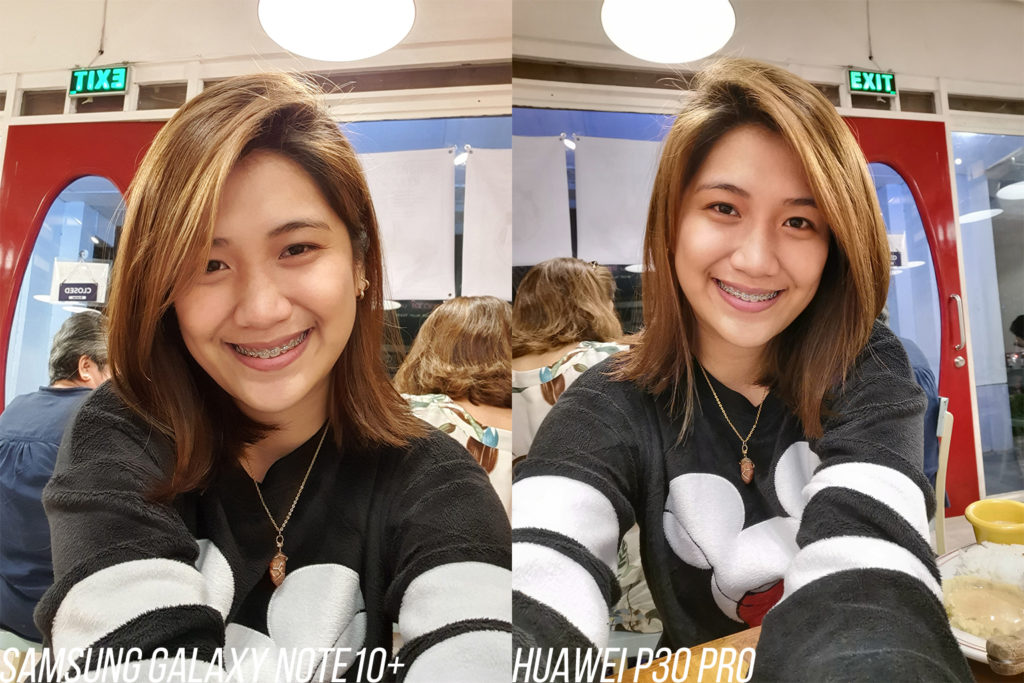
The Samsung Galaxy Note10+ packs a 10-megapixel selfie camera while the Huawei P30 Pro packs a 32-megapixel selfie camera and in my review, both performed well as expected with the Huawei P30 Pro still has an amazing AI capabilities while the Samsung Galaxy Note10+ produces great selfie photos.
In our selfie test, the Samsung Galaxy Note10+ got a better and more detailed shot than the Huawei P30 Pro.
Winner: Samsung Galaxy Note10+
Zooming

Samsung Galaxy Note10+

Huawei P30 Pro
We all know that the Huawei P30 Pro is still one of the only few smartphones that is capable of Ungodly zoom. How good? Well, the Huawei P30 Pro can zoom up to 50x and the Samsung Galaxy Note10+ can only zoom in at up to 10x despite being release later than the Huawei P30 Pro. Despite zooming in up to 50x, the Huawei P30 Pro were still able to capture the details even at lowlight which is very impressive.

Truly an impressive feat on the Huawei P30 Pro. Actually, there are some times that I prefer using the Huawei P30 Pro over my mirrorless camera due to its zooming capabilities.
Yep, there’s a periscope lens on the Huawei P30 Pro and it brings 10x hybrid zoom and up to 50x zoom. So how does that work? Well, it’s an amazing technology by Leica and Huawei and they’re able to fit in a 125mm-equivalent lens with image stabilization to the Huawei P30 Pro. Thanks to the folded optics, Huawei found a way to fit it in by placing it sideways which allows the smartphone not to have a thick body.
But of course, it’s not just that. Huawei also has a good software algorithm that enhances the super zoom function of the smartphone.
Winner: Huawei P30 Pro
Night mode


The Huawei P30 Pro isn’t new in the night mode scene. The Huawei P20 series already impressed us with that feature and the Huawei P30 Pro is a lot better compared to the predecessor. Samsung however, just introduced their night mode recently when they launched the Samsung Galaxy S10 series. Yes, the night mode of the Samsung Galaxy Note10+ has improved but the Huawei P30 Pro still won the game as it produces more natural colors and more details at lowlight. Not only that, the Huawei P30 Pro still has the highest ISO for a smartphone at 409600.
Thanks to the RYYB sensor of the Huawei P30 Pro that is 40% more light-sensitive than the conventional RGB sensor. Not only that, it also comes with OIS, maximum ISO of 409600, and f1.6 aperture that helps produce the best low light shots that we can see on a smartphone.
Winner: Huawei P30 Pro
Verdict
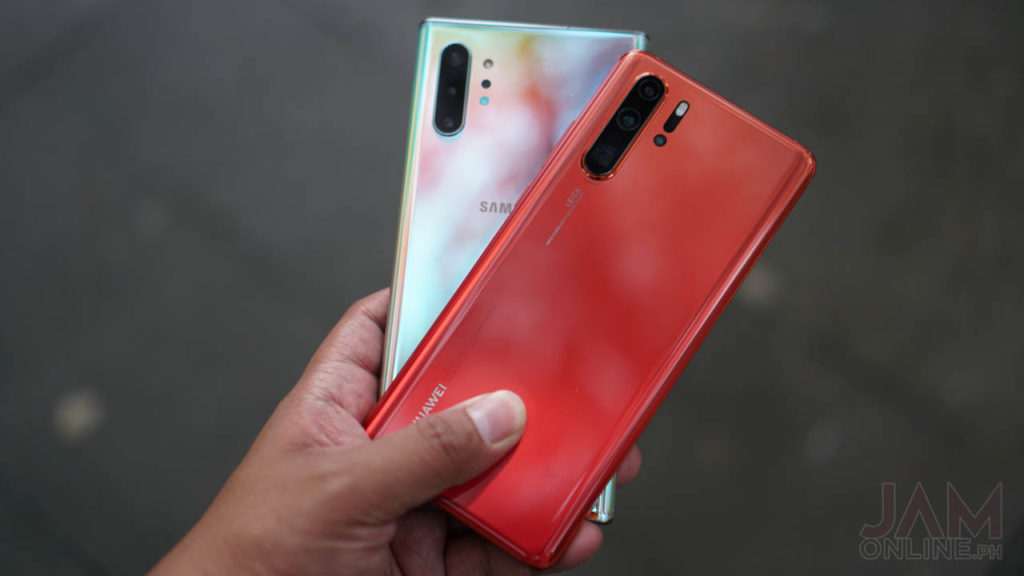
One thing is clear – the Huawei P30 Pro and the Samsung Galaxy Note10+ are great camera smartphones but despite being out in the market for a while now, the Huawei P30 Pro still manage to gain an upper hand in some of our tests especially in the night mode and the zooming features of the phone.
Not only that, the Huawei P30 Pro also starts at a lower price of Php45,990 for the 256GB variant while the 512GB variant starts at Php55,990 while the Samsung Galaxy Note10+ starts at Php60,990 for the 256GB variant and Php72,990 for the 512GB variant.
We’re also expecting that the Huawei Mate 30 series will be out in the Philippines soon and we can even expect that the Mate 30 series will even have a better camera than the Huawei P30 Pro. Huawei is truly ahead of the game in the camera segment and we can’t wait for the next-generation flagship smartphone of the company.

